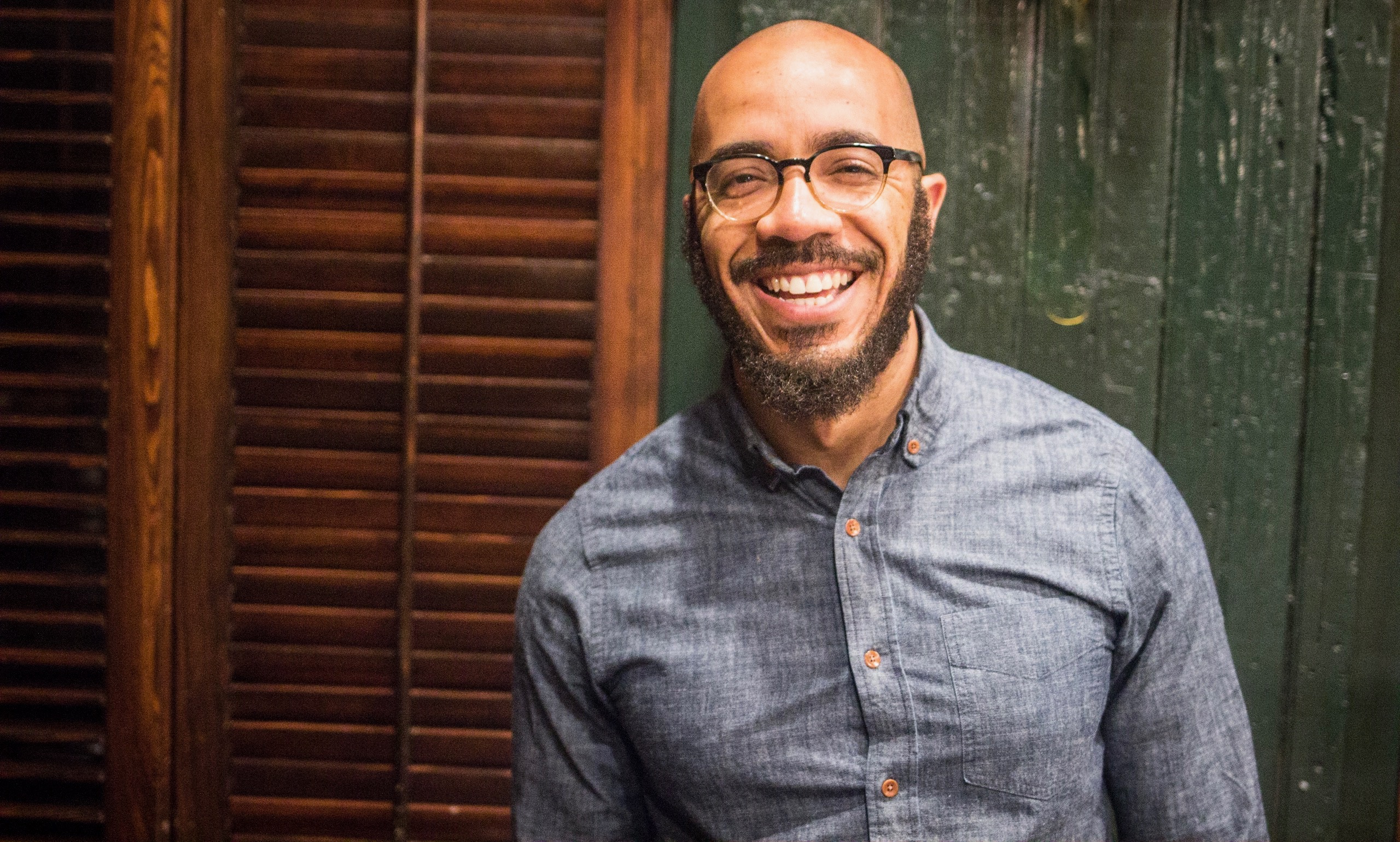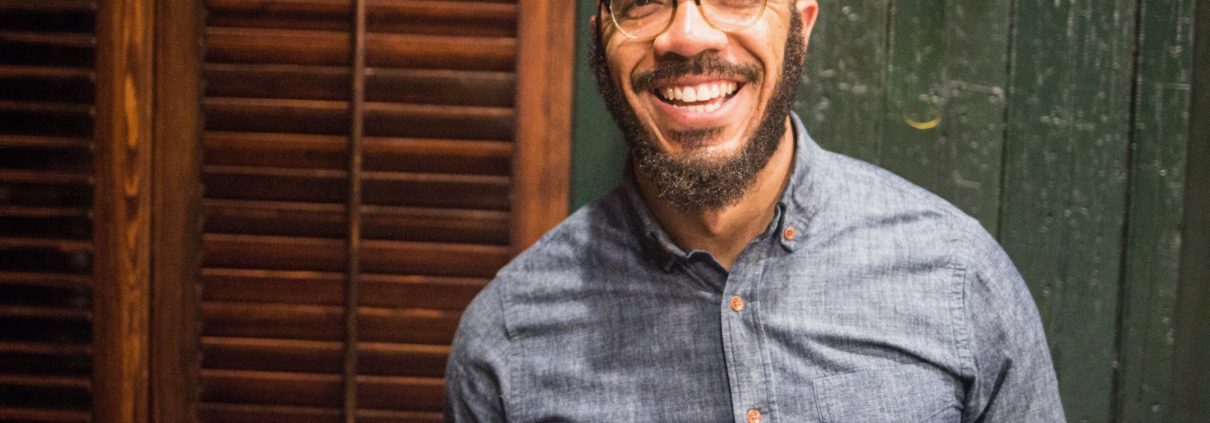Interview with Clint Smith: Racial Injustice and Youth Sentencing

Clint Smith is a prominent writer, teacher, and Harvard Ph.D. candidate. We spoke with him about the ongoing issue of racial injustice and its effects on our criminal justice system and youth sentencing in this country.
Here we are in 2018, 50 years after the assassination of Dr. King. Where are we in this moment in terms of race relations in our country? The legacy of racism? Have we made “progress,” or is that even a term that makes sense to discuss in this context?
We need to make sure that we’re having a nuanced conversation around progress. We’re in a moment in which some scholars and writers are telling us that things are actually better than they’ve ever been, and that even though we are inundated with bad news, it’s important to take a broader historical look at the arc of progress that has been made across time. I think books and ideas like these bring up some really important points, and I also think that criticism of these ideas stems from the fact that in certain spaces we’ve made huge progress, and in other spaces we haven’t. It’s important to disaggregate data to see who progress is happening for and who it isn’t.
The racial wealth gap is growing, not shrinking. Many schools are more re-segregated than they were since before Brown v. Board of Education in 1954, and to give a longer historical arc to the analysis, we are too quick to assume that the most egregious examples of racial violence happened a long time ago, when they weren’t that long ago at all. The first slaves came here in 1619, the Emancipation Proclamation was in 1863, and then in 1964 and 1965 there’s the Civil Rights Act and the Voting Rights Act.
So, it’s only been about 50 years since black people in this country have had even a semblance of legal and legislative freedom. For the 350 years prior to that it was fundamentally legal to discriminate against, dehumanize, delegitimize, and disenfranchise black people. If you kick someone for 350 years, and then stop kicking them for a seventh of that amount of time, it’d be disingenuous to look at that person and say, “What’s wrong with you? Why don’t you have the same academic outcomes as me? The same economic outcomes as me? Why is there so much violence in your community?”
But again, we have this deeply ahistorical conception of the narrative of our country’s history with racism, and that allows us to misdiagnose and misunderstand the contemporary racial landscape. Obviously, the criminal justice system is a huge part of that.
Yes, let’s talk more about how this relates to the criminal justice system in the age of mass incarceration. And how it relates to living in an era during which an unprecedented number of youth, particularly brown and black youth, are serving extreme sentences.
The history of racism and white supremacy in this country and its relationship to our criminal justice system is deeply profound, and it impacts every facet of American political and social life. One can’t begin to understand the way that Mike Brown was killed in Ferguson, for example, without understanding the ways in which the Ferguson police department has essentially criminalized poverty as a proxy from criminalizing blackness, as is documented in the Department of Justice’s Ferguson Report.
The Department of Justice Investigation of the Ferguson Police Department is really important and illuminating, and it made clear something that has been anecdotally understood by communities of color for a long time. This country made a very specific choice about 40 years ago about how we’re going to engage with the problems of crime and poverty, and the lack of services, mobility, and opportunity for black and brown and poor people. And that’s where we go from 300,000 people in our criminal justice system in 1970 to 2.2 million in 2010.
This is obviously reflected in mandatory minimums, in the massive amount of control that prosecutors have been given, and in the fact that upwards of 90-95 percent of all court cases end in plea deals meaning innocent people plead guilty to crimes they didn’t commit just so they can get out of jail. And so the relationship between all of these social and political phenomena are deeply interwoven and deeply interrelated, and can’t be understood without one another.
In terms of juvenile justice, I think at this point we have a pretty extensive body of social science that shows the way that black children are adultified. The adultification that black girls experience, that black boys experience. The way in which Tamir Rice, a 12-year-old boy whom they referred to as if he we were someone much older than he was. Young black girls experience school discipline at far greater rates than their white counterparts. We have the history, the social science, and the data to demonstrate the ways in which all of these different things intersect.
To your point, seventy percent of people serving juvenile life without parole are people of color. You’ve worked with many of these people. What impact does this sentence have on them, and on their communities?
The first thing that you realize when you start working with this population is that but for the arbitrary nature of certain circumstances, I could very easily have been on the other side of the prison bars. We operate under this strange delusion in American life that we inherently deserve the opportunities we’ve had. We don’t account for the ways in which so many other things — a million things that are beyond our control — had to happen for us to be in the positions we’re in. And if you think that you inherently deserve the positive things you have gotten, then implicitly, you’re suggesting that the people who experience much more negative outcomes inherently deserve those.
That extends especially to our prisons, where the idea of prison is predicated on a certain social isolation and removal. On the one hand, American society is beginning to recognize the ways in which the death penalty is an egregious and horrific crime. And on the other end, we have the mythology of the “nonviolent drug offender,” but even if you let out every nonviolent drug offender, you would still have around 1.7 or 1.6 million people in the system, still accounting for one-fifth of the world’s total.
If we want to have a real conversation about ending mass incarceration, we have to ask a much more difficult set of questions about instances where people have committed physical harm against someone else, and those are questions that aren’t politically palatable, but I think they’re important.
Does it make sense to put a child in a cage for the rest of their life for something that they did when they were 15, 16, 17 years old? Even though all the social science shows that your likelihood of committing crimes decreases precipitously after you’re 30-35 years old? That your brain isn’t fully developed until you’re 25? That by 2050, our prisons will be 30 percent filled with people who are 55 and older?
And yet we’re unwilling to have that conversation, often because it demands a sort of empathy and nuance that has often been lacking in the discourse around mass incarceration because violent crime is not seen as something that is deserving of context and a sort of orientation towards understanding in the same way that nonviolent crime is, even the notion of violent vs. nonviolent is a false dichotomy. A lot of things that are called violent crimes don’t actually involve physical harm against anyone, and a lot that are called nonviolent are a little more complicated than that.
All that’s to say, in my conversations with folks, I try to get us to think of the context in which someone lives that may lead someone to do something which would put themselves in a position to have them sentenced to life in prison, as a child, and again thinking about which children are we thinking of as children and which are we thinking of as a population which are sort of disposable.
You use the word empathy, and I know you’ve referenced a “double standard of empathy” or “selective empathy” in your work — in other words, the idea that people don’t feel empathy evenly, or the same way, for certain populations. Does this double standard exist / play a role when it comes to harsh sentencing practices?
Yeah, I think there’s 100 percent a double standard. The issue is that is a recognition of that double standard enough to change it, and the answer on that isn’t necessarily clear either. There was a big Stanford study done a few years ago. It showed that while you might think that a group of white people who were told that black people were disproportionately handed draconian sentences, that they would say, “That’s terrible, let’s make it so that doesn’t continue to happen.”
But actually makes them double down on the existence of the sentences, because it perpetuates in their minds the idea that black people are deserving of them, or are an inherently dangerous group of people. I think sometimes people think a recognition of one’s bias will prevent the bias from happening, but sometimes it only reinforces it.
How do these dynamics, and this reality that brown and black children are more likely to be funneled into the criminal justice system and get more extreme sentences once there, impact their childhoods?
What does it mean to grow up in a world that is constantly taught to fear you? What does it tell a young child about who they are when the messages they keep getting about themselves are that they’re someone to be feared, someone to be caged, someone to be surveilled, someone who requires an occupying police force who is continually harassing and interrogating you and people you love? That creates a real and ongoing trauma for any young person.
I remember when I was teaching high school, some of my kids thought that their community was the way it was because they had internalized a lot of the racism that they’d been inundated with about themselves. Like, oh, well, we don’t work very hard, or we’re violent, or we did this to ourselves. And they’re not accounting for the decades of public policy decisions that have been made to de-prioritize their communities but also take resources from and plunder and decimate the social service infrastructure and economic infrastructure in many of these places.
To bring it back, we can’t begin to understand why the United States is the only country in the world that sentences children to life without parole, and why black and brown children are disproportionately impacted by this sentence without this history — it’s deeply tied to a centuries-long history of white supremacy and racism in this country, and the way that it has continuously evolved, continuously reinvented itself, continuously attempted to adjust and recalibrate to a new and contemporary moment, in which it becomes more subtle and more egregious and more difficult to explicitly detect.



